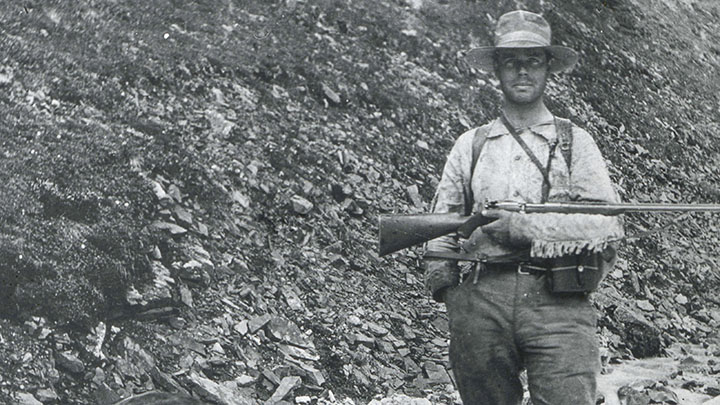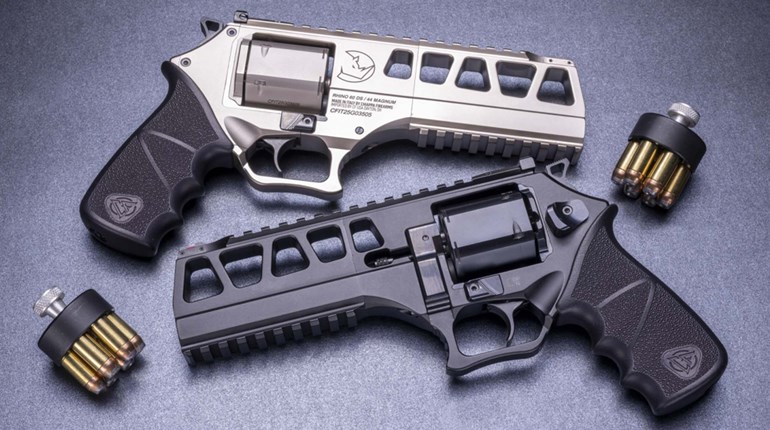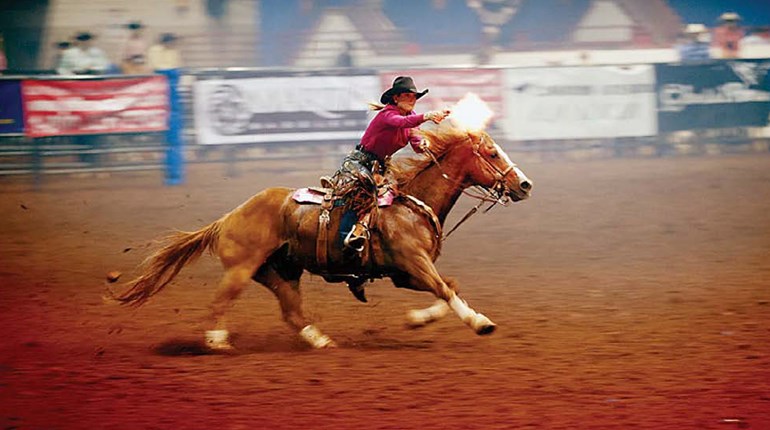
From John J. Audubon to Aldo Leopold, hunting is inextricably linked to American conservation efforts. Early American hunter-naturalists spent years in the field, carefully observing, documenting and developing a passion so deep for the quarry they pursued that they sought to preserve those animals and their habitat for future generations. A rifle or shotgun was central to their work as conservationists. It was their scientific instrument and their method of survival in the uncharted landscapes where their research took place. Three years ago, one such firearm, the rifle used by Charles Sheldon, was given a permanent home at Sheldon’s greatest accomplishment, Alaska’s Denali National Park and Preserve.
Charles Alexander Sheldon was born in 1867 in Vermont. His early career in the railroad industry took him to northern Mexico where he first encountered mountain sheep, which he hunted and studied. In 1903, Sheldon retired from active business to begin studying North American wild sheep full-time. He would later comment in his book The Wilderness of the Upper Yukon: “The mountain sheep of America are among the noblest of our wild animals. Their pursuit leads the hunter into the most remote and inaccessible parts of the wilderness and calls into play his greatest skill and highest quality of endurance.”

Sheldon’s first northern adventures took him to the Pacific Northwest and western Canada. In 1904, he joined Dr. Wilfred Osgood of the U.S. Department of Agriculture’s Division of Biological Survey (the predecessor of the U.S. Fish and Wildlife Service) and nature artist Carl Rungius for an expedition in the Ogilvie Mountains. Sheldon spent his days hunting, observing and taking careful scientific notes on the wild animals and geography. The game he took was preserved as scientific specimens (some were sent to the Smithsonian’s Museum of Natural History), was used as models for Rungius’ art and supplied camp meat for the expedition. Later that year Sheldon was joined by famed African hunter and adventurer Frederick Selous, and together they explored the headwaters of the Macmillan River.
In 1906, Sheldon went in pursuit of Dall sheep in the vicinity of Denali (then called Mount McKinley) with Harry Karstens, who would later become the first superintendent of Mount McKinley National Park. In his book The Wilderness of Denali, Sheldon described his first sight of the 20,310-foot peak: “I can never forget my sensation at the sight. No description could convey any suggestion of it.”
Sheldon returned the following year and continued his study of the Denali region and its wildlife, spending nearly a year operating from a cabin on the Toklat River.
Returning to the continental United States, Sheldon, joining forces with the Boone and Crockett Club (B&C), an organization that counted among its founders famed hunter-naturalist and national park proponent Theodore Roosevelt, spent more than a decade lobbying Congress to have the Denali area declared a national park. Having observed the work of commercial meat hunters in Alaska, Sheldon knew the task was pressing.
Over the next decade Sheldon was joined by others, such as Boone and Crockett president George Bird Grinell, Belmore Browne of the Camp Fire Club of America and president of the American Game Protective Association John B. Burnham. Their efforts are a story in itself. They were successful when, in 1917, 42 years before Alaska became the 49th state, the 1.6 million-acre Mount McKinley National Park was established. Sheldon’s work was not finished. He continued to press for funding to run the park and to expand its boundaries. The park would later be renamed Denali National Park and Preserve, the name Sheldon had originally pushed. Because of his efforts in creating it, Sheldon would come to be known as the "Father of Denali National Park.”
In the introduction to The Wilderness of Denali, the famed zoologist and head of the Division of Biological Survey C. Hart Merriam describes Sheldon in the following words: “Choosing his hunting grounds in some of the most remote and inaccessible parts of the continent; possessed of physical strength and endurance almost beyond belief, of unbounded enthusiasm, of powers of observation second to none, and endowed with a conscience intolerant of exaggeration, the accounts of his hunts abound in vivid description of localities not previously explored, while his circumstantial studies of the habit of animals rank amongst the most valuable contributions thus far made to the life histories of many species—particularly the mountain sheep, caribou, moose, grizzly bear and wolverine.”
“Like many at the time who were driven to the adventure of exploring new, wild lands, [they] did so through a passion for hunting, a fascination for nature and being close to a variety of game in far off, remote places,” said Tim Brady, current vice president for conservation with the Boone and Crockett Club. “The other binding affect for these early B&C members was that because of their travels they got to see firsthand what was becoming increasingly obvious—that within a generation native wildlife was not going to withstand unregulated harvest, even in the most remote regions, and rapid loss of habitat in more developed areas. The ethic they developed was committing their lives to doing something about it. For Sheldon it was firing both barrels; biological and taxonomy information was needed on the white sheep of Alaska and at least one obvious place where they thrived should be preserved. One would assume their only regret is they could not do this in more places.”
Sheldon’s constant companion on his expeditions was his rifle, custom made by W.J. Jeffery on a Dutch 1895 Mannlicher action built by Steyr in 1899. It was chambered in 6.5x53R, a cartridge also known by its British designation of .256 Mannlicher. The Jeffery record from the rifle’s 1901 build noted its 24-inch Krupp steel barrel with raised sighting rib, its engraved action and its weight of 7 pounds, 10 ounces.

The Mannlicher-type magazine of Sheldon’s rifle required the use of an en-bloc clip of cartridges. Its advantage was quick reloads under pressure; several times in his writing Sheldon tells of rapidly refilling his magazine: “Quickly putting in a fresh clip of cartridges and running forward, I saw the dark bear laying dead, twenty feet below in the thick brush” (The Wilderness of the North Pacific Coast Islands).
Sheldon purchased the rifle around 1902 from American Jeffery dealer Abercrombie & Fitch and continued to use it for another quarter century. In the preface to his book The Wilderness of the Upper Yukon, Sheldon stated, “for large game my Mannlicher, 256 calibre, is the only rifle I have ever used in the North.” Selous also noted Sheldon’s success with the rifle. In his book Recent Hunting Trips in British North America (1907), he states, “my friend Mr. Charles Sheldon has been very successful in killing grizzly bears—the most formidable of American animals—with [a .256 Mannlicher].”
In 2016, with the 2017 centennial of Denali National Park approaching, Charles Sheldon’s grandson, Charlie Sheldon, contacted the park to inquire about staff plans to celebrate the milestone. Lynn McAloon, the park’s centennial coordinator, was eager to include Sheldon’s descendants in the celebration. As they talked, Charlie’s thoughts turned to his grandfather’s rifle. When Charles Sheldon died in 1928, the rifle was passed to his only son, William, who continued to use the rifle for hunting in the Northwest. In turn the rifle was inherited by William’s only son, Charlie.
“In the course of our conversation, I said, ‘My grandfather loved Denali above all places, and I’m thinking maybe I want to donate his rifle to the park,’” Charlie Sheldon recalled. “As soon as I said that I knew it was the right thing to do.”

The park already has some Sheldon artifacts in its collection, but the rifle represents a key aspect of Sheldon’s work and the history of the founding of Denali.
“These early naturalists were hunters. It was the way they did their research,” McAloon said. “We don’t do science that way now, but it’s a part of the history of this place.”
“It may be less true today, but for the adventurer/explorer a rifle was the lifeline,” Brady said. “In lands that expose our human frailties a rifle was the great equalizer. It meant food, protection and even survival. Consequently, it was a man’s rifle that was his constant and trusted companion, even more so than his horse. Its make, its model, caliber and condition spoke for who he was, where he had been, where he was going and what he was capable of—a resume and a signature all in one. As far as his work in Denali, exploring its treasures and secrets, and mapping what its borders should be—none of this would have been possible in the day without boots on the ground. One might think a compass would be a must, but boots on the ground would not have happened without a rifle.”

In his book The Wilderness of the Upper Yukon, Sheldon himself described the link between hunting and conservation: “In the civilized man the hunting instinct has become broadened and transformed. We have learned to love and contemplate nature. We go back to the wilderness, and the more primitive it is, the more strongly we feel its charm. But the wilderness must include the animals. Our active sympathies, developed by civilization, extend also to them. We feel for them along with their wilderness environment. We learn to know and love them. They become inseparable from the mysterious emotions roused by mountains, valleys, woods, and waters.”
The park and the Sheldon family immediately began working to make the donation happen. Park employee Shawn Burton worked with Mannlicher expert Dr. Christopher Ebert, archivist of the Mannlicher Collectors Society, who extensively researched the history of Sheldon and his rifle, to authenticate the rifle’s history.
On Feb. 26, 2017, 100 years to the day that Woodrow Wilson signed the law that formed Denali, a ceremony was held in which Charlie Sheldon formally donated his grandfather’s rifle to the park. He was joined at the event by Harry Karstens’ great-grandson, Ken Karstens.
The Sheldon rifle is an example of what Jeffery called its “No. 3 Best Quality Rifle.” Its barrel features a matted rib with an express sight with three folding leaves. A folding Lyman peep sight was fitted to the cocking piece of the bolt, to overcome the challenges of mounting an aperture sight on a Mannlicher action with its split rear receiver bridge. It is stocked in an elegant, pistol-gripped and checkered piece of walnut and the metal surfaces of the action are lightly engraved.
The rifle has survived quite well considering its age and its adventures.
In his writing, Sheldon tells of once using the rifle to arrest his fall on a steep Alaska slope and another fall that broke off the rifle’s original front sight. The wear on the rear of the stock reflects a life spent in a saddle scabbard. At some point a repair was made in the heel of the stock. Around 1910 Sheldon sent the rifle back to Abercrombie & Fitch to be “remodeled” and then on to A.F. Stoeger to have new sights installed and regulated. The A&F modifications included stippling the surface of the cocking piece and front receiver ring to reduce glare over the sighting plane. The bolt handle was also modified. While the original handle was turned down and ended in a round knob, the knob was removed and a flat “butterknife” handle welded on to replace it. By 1910 this style was popular on Mannlicher-Schoenauer rifles; Sheldon may have had the modification made for easier use in a horseback scabbard. The original bolt handle is seen in photos of the rifle during Sheldon’s time in the Northeast, while the butterknife handle is present in pictures from the time he spent later in the Southwest.
Mannlicher rifle actions were popular with British riflemakers at the turn of the 20th century. As noted in “The History of the Mannlicher Schoenauer Carbine” (American Rifleman, April 2016), it was one of the first generation of smallbore, smokeless-powder rifles firing high-velocity jacketed bullets. A Mannlicher and its 6.5mm cartridge was the choice of many turn-of-the-century adventurers. Jeffery marketed the rifle for chamois hunters and Sheldon put it to good use, stalking keen-eyed sheep to within open-sight range.
After more than a century this rifle that so strongly illustrates the bond between hunting and conservation has returned to Denali. Said Brady at the ceremony: “In fact, there is not a national park or monument that exists today that did not have its champions, and many of these special places bear their names. Denali had its champions. The layer that likely won’t get much mention in our era of correctness is the fact that these champions were hunters, and most were members of a coalition bonded together for one purpose: to save wildlife.”

“Since Sheldon was an avid hunter and naturalist, the rifle must have been one of his most prized possessions, so for the park to have possession of it is significant,” said Denali National Park historian Erik Johnson.
“Because Sheldon worked diligently and tirelessly to get Mount McKinley National Park established, it seems appropriate that the Park hold and interpret perhaps his most valuable possession/tool from his Alaskan explorations.”
The Sheldon family agrees.
“I feel that my grandfather’s spirit is at Denali,” said Charlie Sheldon. “The establishment of the park was the culmination of his life’s work. I think he would be delighted to see so many people working so hard there to preserve his vision. That’s where his rifle belongs.”


































